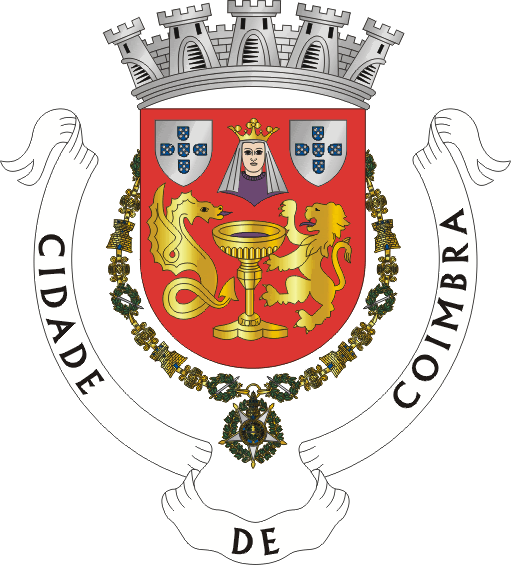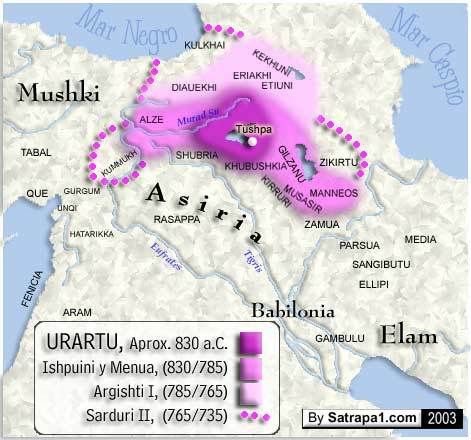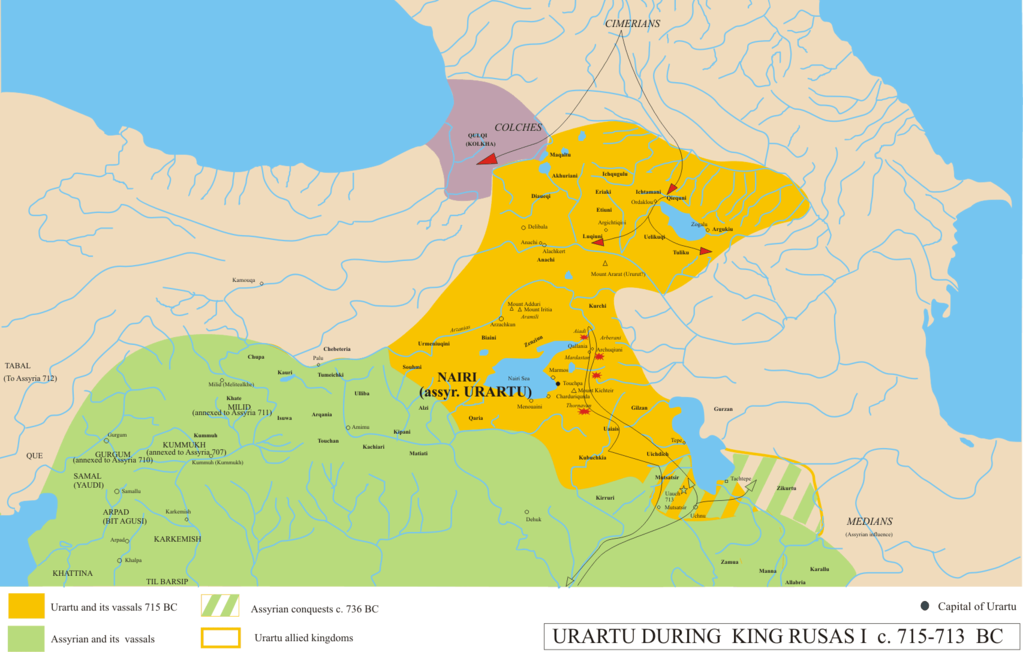domingo, 24 de agosto de 2008
Crossroads, Eastern Anatolia, J1b M365 Land
sábado, 23 de agosto de 2008

Suebi flag as described by Fray Bernardo de Braga and Fray Bernardo de Brito

Ossetian coat of arms

Coimbra coat of arms
Red Lion of Alan origin



segunda-feira, 18 de agosto de 2008
How could J1b arrive to Western Iberia ?
In terms of geographical curiosity J1b M365 linked Eastern and Western Iberia !
J1 M267 in Western Iberia could be related to several Eastern migrations or invasions since Prehistory. Iberomaurusian groups coming before the Neolithic, groups coming with the Neolithization of the Peninsula, groups arriving with early seafarers from Phoenicia or from Greece, Jews or Arabs could have brought some of the J1 M267 to Western Iberia. Every hypothesis is possible and must be tested.
The only organized migratory wave of people to Lusitania and Western Iberia coming from Eastern Anatolia and the Caucasus is the Alan movement in the fall of the Roman Empire.
One of the best compilations about the Alans is the book "Sources on the Alans" written by Agustí Alemany. Hydatius bishop of Aquae Flaviae (modern Chaves) wrote that in 409 the Alans led by Respendial settled in the provinces of Lusitania: "Alani Lusitaniam et Carthaginiensem provincias "
Jorge C. Arias thesis, Identity and Interaction: The Suevi and the Hispano-Romans, estimates the number of Alans in Iberia calculated in the literature as 30,000 to 40,000 people, so an organized influx of Caucasian DNA arriving in Western Iberia as a registered historical fact.
Portuguese Medieval genealogical records have names related to the Alans, like Mendo Alão (or Mendo Alam), a founding character of a Portuguese genealogical lineage and a mythical Armenian Princess too is present in the old legends.
Vestiges of the Alans in Portugal are also found in the legend of Coimbra's coat of arms, representing the Alan red lion and the Suebi green dragoon, according to Fray Bernardo de Brito in Monarquia Lusitana.
Respendial (Lusitania rex) was king of a group of Alans in Lusitania in the early 5th century CE.
Attaces, another Alan king in Lusitania (Ataces Lusitanae rex) was defeated and killed in battle with the Visigoths.
The first two kings in Lusitania were kings of Alan origin:
BERNARDO de Braga, O.S.B. ?-1605, Tratado sobre a precedencia do Reino de Portugal ao Reino de Napoles / composto por Frei Bernardo de Braga, copiado por Albano Antero da Silveira Pinto. - Porto : Typ. da Revista, 1843. - 54 p. ; 19 cm. - Copiado de um manuscrito autentico existente na Torre do Tombo
J1b M365+ in Western Iberia seems to be related to the Alan tribal migration of 409 and there's the possibility of a defined and recognizable haplotype (STR genetic signature) related to an Alan alpha male character in terms of a regular frequency and distribution in the modern Portuguese population.
More research is needed.
domingo, 17 de agosto de 2008
The pioneer study of Semino et al (2004) found J1b M365 at rates of 1-2% in Turkey and Georgia.
As important as where a haplogroup/SNP is found, it's also very important where a haplogroup/SNP is not found.
No J1b M365 was ever found in Middle East populations of Arab and Jewish origins.
No J1b M365 was found in the Iranian sample analysed in Regueiro et al (2006).
Iran: Tricontinental Nexus for Y-Chromosome Driven Migration
Hum Hered 2006;61:132–143. DOI: 10.1159/000093774
No J1b M365 was ever found in North Africa
No J1b was found at any Spanish or Hispanic population (no one from the Castilian Meseta, Catalonia, Basque Country, Andalusia) with the exception of the already mentioned Western Iberian cases from Portugal and one case in Galicia.
No Portuguese Cristão Novo (Anusim) or Cigano (Gypsi, Gusmão et al. A Perspective on the History of the Iberian Gypsies Provided by Phylogeographic Analysis of Y-Chromosome Lineages) has been reported as J1b M365.
So up to date J1b M365 has been socially found only in samples from Anatolia-Caucasus and samples from Western Iberia-Portugal and in Portuguese colonists)
Map of J1b M365 cases:
2 SNP confirmed cases of J1b in 491 Portuguese samples in FTDNA 2/491 (jun/2008) and 2 cases of J1b (presumed haplotypes) in SMGF in 611 Brazilian samples 2/611 ! YHRD shows 2 cases (presumed haplotypes) in 68 Azoreans tested 2/68, and one J1b (presumed haplotype) in 244 Northern Portuguese samples 1/244 in Paula Sánchez-Diz et al. Population and segregation data on 17 Y-STRs: results of a GEP-ISFG collaborative study. 674 haplotyes from Portugal+Brasil+Argentina in the Supplemental Material
The occurrence of M365+ in the Portuguese male population seems to be around 0,2-0,8%, because the Portuguese J1b modal haplotype with the characteristic J1 M365+ DNA signature (DYS393=13, 390=22, 19=15) has been found in almost every representative Portuguese DNA populational sample collected, what means a fraction of 0,2 to 0,8% of the total Portuguese Y DNA (45 millions) in Portugal (5 millions) and in Brazil (40 millions), what could perhaps be an indication of the J1b M365 contribution in the founding stages of the ethnogenesis of the Proto-Portuguese people, language and political organization 1500 years ago.
sábado, 16 de agosto de 2008
M365 is a Y-chromosome single-nucleotide polymorphism (SNP).
M365 is classified as J1b by the International Society of Genetic Genealogy (ISOGG - 2008) and in Karafet et al, New Binary Polymorphisms Reshape and Increase Resolution of the Human Y-Chromosomal Haplogroup Tree. Abstract. Genome Research, published online April 2, 2008.
Family Tree DNAY Chromosome Browser

Name: M365
Type: snp
Source: M
Position: ChrY:2948678..2948678 (+ strand)
Length: 1
ISOGG_haplogroup: J1b
YCC_haplogroup: J1b
allele_anc: A
allele_der: G
primer_f: CCTTCATTTAGGCTGTAGCTGC
primer_r: TGTATCTTTAGTTGAGATGG
M365 class=Sequence position=ChrY:2948678..2948678 (+ strand)
M365 was first reported in this 2004 article:
Hum Genet (2004) 114 : 127–148
DOI 10.1007/s00439-003-1031-4
Excavating Y-chromosome haplotype strata in Anatolia
Cengiz Cinnioglu · Roy King · Toomas Kivisild ·
Ersi Kalfoglu · Sevil Atasoy · Gianpiero L. Cavalleri ·
Anita S. Lillie · Charles C. Roseman · Alice A. Lin ·
Kristina Prince · Peter J. Oefner · Peidong Shen ·
Ornella Semino · L. Luca Cavalli-Sforza ·
Peter A. Underhill
M365 was found in Eastern Anatolia
Marker - M365
Nucleotide change - A to G
Position -(bp) 246
Forward 5′→3′ ccttcatttaggctgtagctgc
Reverse 5′→3′ tgtatctttagttgagatgg
Total size (bp) - 274
Semino et al. 2004, observed J-M365 (in two Turks and one Georgian):
Am J Hum Genet. 2004 May; 74(5): 1023–1034.
Published online 2004 April 6.
Origin, Diffusion, and Differentiation of Y-Chromosome Haplogroups E and J: Inferences on the Neolithization of Europe and Later Migratory Events in the Mediterranean Area
Ornella Semino, Chiara Magri, Giorgia Benuzzi, Alice A. Lin, Nadia Al-Zahery, Vincenza Battaglia, Liliana Maccioni, Costas Triantaphyllidis, Peidong Shen, Peter J. Oefner, Lev A. Zhivotovsky, Roy King,3 Antonio Torroni, L. Luca Cavalli-Sforza, Peter A. Underhill, and A. Silvana Santachiara-Benerecetti1
J1b M365 cases were found in the following locations:
Turkish (Istanbul) (1/73) 1.4
Turkish (Konya) (1/129) .8
Georgian (1/45) 2.2
1 - Family Tree DNA database (august, 2008) there are only 4 individuals J1b M365+ SNP tested:
http://www.familytreedna.com/
http://www.familytreedna.com/public/Y-DNA_J/index.aspx?fixed_columns=on
Ancestor's locations of the FTDNA J1b's
Turnhout, Belgium - Cuylaerts
São Romão de Milhazes, Barcelos, Portugal - Oliveira
Orense, Galicia, Spain - Dominguez
São Miguel, Azores, Portugal - Sardinha
2 – Sorenson Molecular Genealogy Foundation- SMGF - J1b candidates
http://www.smgf.org/
There’s a group of J1b candidates from the Sorenson (SMGF) database. SMGF does not perform SNP tests.
Y Search code - name - location
R7SHE - Cordeiro de Melo – Santana do Livramento, Rio Grande do Sul, Brazil – SMGF
6WQMH – Gonçalves – Imaruí, Santa Catarina, Brazil – SMGF
X6P7G – Ferrer – Reunion Island – SMGF. A Joachim Ferrere was the son of Custódio Ferreira, from Lisbon. Naissance : 11 mars 1726 à Lisbonne, PORTUGALDécès : 9 novembre 1787 à St Paul, REUNION, FRANCE http://www.ile-bourbon.net/hoarau/dat7.htm#14
So all 3 candidates are related to a Portuguese or Brazilian origin.
I have transfered the haplotypes to Y Search
R7SHE - Cordeiro de Melo – Santana do Livramento, Rio Grande do Sul, Brazil – SMGF and
PRJ9T– Dominguez – Ourense, Galicia, Spain - J1b tested FTDNA matched 26/26 in 26 markers !
Genetic distance – markers/matches from PRJ9T Dominguez, J1b tested (FTDNA) :
8 - 67/59 to 2CUZQ, Oliveira J1b tested (FTDNA)
3 - 30/27 to 6WQMH Gonçalves (SMGF)
2 - 30/28 to X6P7G Ferrere (SMGF)
0 - 26/26 to R7SHE Cordeiro de Melo (SMGF)
3 - YHRD
http://www.yhrd.org/
STR database searching Y DNA J1b M365+ possible haplotypes:
M365 SNP tested FTDNA haplotypes :
DYS19- 389I – 389II – 390 – 391- 392 – 393 – 385a, 385b – 438 – 439
15 – 13 - 29 – 22 - 10 - 11 – 13 – 12,19 – 10 – 11 – FTDNA – M365+ Galicia, Spain
15 – 13 - 29 – 22 - 10 - 11 – 13 – 12,19 – 10 – 11 – FTDNA – M365+ Azores, Portugal
4 YHRD direct matches with YHRD haplotypes:
15 – 13 - 29 – 22 - 10 - 11 – 13 – 12,19 – 10 – 11 – YHRD - Rio de Janeiro, African 1/135
15 – 13 - 29 – 22 - 10 - 11 – 13 – 12,19 – ** – ** - YHRD – Azores 1/68
15 – 13 - 29 – 22 - 10 - 11 – 13 – 12,19 – ** – ** - YHRD – Azores 1/68, total 2/68
15 – 13 - 29 – 22 - 10 - 11 – 13 – 12,19 – ** – ** - YHRD – Kahramanmaras, Southern Turkey , Romani 1/111
1 SMGF haplotype:
15 – 13 - 29 – 22 - 10 - 11 – 13 – 12,19 – 10 – 11 - SMGF - Gonçalves de Melo, Brazil
The same presumed J1b M365 haplotype matching 7 individuals (2 tested from FTDNA, 4 tested from YHRD and 1 tested from SMGF )
List of tested M365 J1b haplotypes:
2CUZQ - Oliveira - Sao Romao de Milhazes, Barcelos, Portugal - FTDNA - M365+ confirmed
PRJ9T - Dominguez - Castro, Ourense, Galicia, Spain - FTDNA - M365+ confirmed
E9YYJ - Cuylaerts - Turnhout, Belgium - FTDNA - M365+ confirmed
K3SMV - Sardinha - Ilha de São Miguel, Azores - FTDNA - M365+ confirmed
YTHMV - Haplotype - Cinnioglu et al article - Eastern Anatolia - M365+ confirmed
Presumed J1b haplotypes:
R7SHE - Cordeiro de Melo -Santana do Livramento, Rio Grande do Sul, Brazil - SMGF
6WQMH - Gonçalves - Imaruí, Santa Catarina, Brazil - SMGF
X6P7G - Ferrere - Reunion - SMGF
6URZK - YHRD possible M365 haplotypes - 4 individuals - Azores/Rio de Janeiro/Turkey
38EUZ - Haplotype 389 - Northern Portugal - Paula Sánchez-Diz et al article "Population and segregation data on 17 Y-STRs: results of a GEP-ISFG collaborative study", 674 haplotyes from Portugal+Brasil+Argentina in the Supplemental Material
List of haplotypes:
http://tinyurl.com/6p2hem



